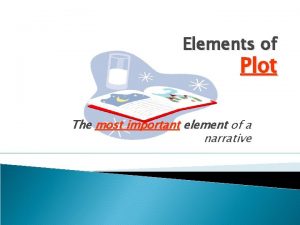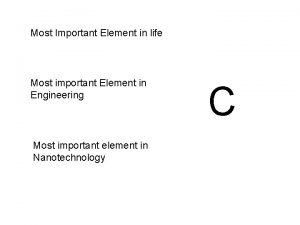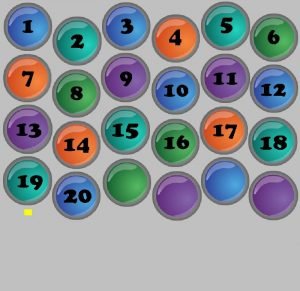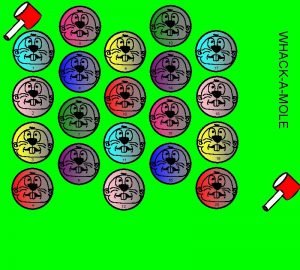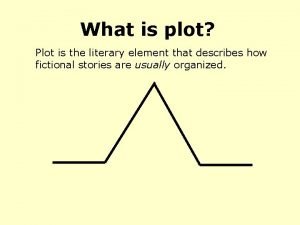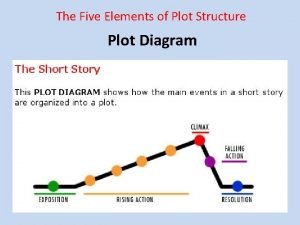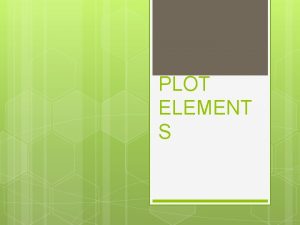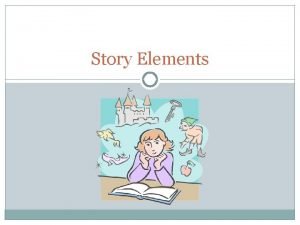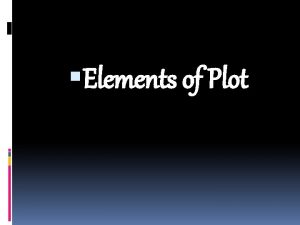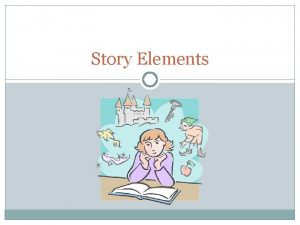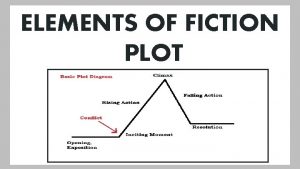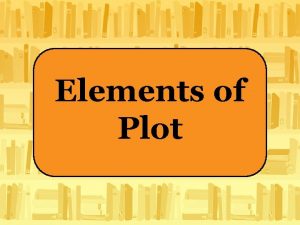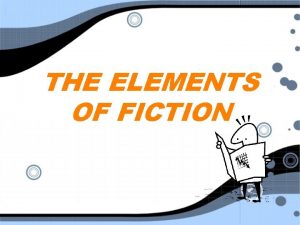Elements of Plot The most important element of















- Slides: 15

Elements of Plot The most important element of a narrative

You already know that: A narrative is a story that can be: � Fiction � Non-fiction � Told orally � Or be written down

Some examples of narratives are: Novels Short stories Folk Tales Urban Legends, etc. Fiction: Biographies Autobiographies Speeches Testimonials, etc. Non-Fiction:

Fiction or non-fiction, spoken or written… …if there is no plot… … there is no story.

The plot of a story has five elements: 1. 2. 3. 4. 5. Exposition Rising action Climax Falling action Resolution …and in a story, these elements occur, or happen in this order.

Think of the action in a story, or the plot, as being like climbing a hill.

1. Exposition: the first stage of the plot. -It is where the author: �Describes the setting �Introduces the characters �Gives some background information ◦ In other words, the exposition gets the reader set up reading and understanding the story)

2. Rising Action: …the second part of the plot, where the author: �Describes the conflict, or problem the characters must face ◦ Note: In most stories, the characters don’t solve the problem on the first try. As they struggle to work things out, the tension rises.

3. Climax: …the third, and probably the best part of the plot. �The high point or the turning point of the story. ◦ The conflict, or problem is at its worst. ◦ The characters may have begun to think of a solution or to work their way out of the problem.

4. Falling Action … the part of the story where the author describes how the problem is solved. �The characters will be working the conflict out and bringing the story closer to a conclusion.

5. Resolution �. . . the details that come after the falling action �What happens to bring the story to an end �Where the reader usually finds out how the conflict in the story is finally resolved ◦ (thus the reason for the name of this step)


To make sense of conflict in a story, think of the plot as a car. The conflict in a story is the fuel that powers that car. NOTE: Just as a car can’t run without gas, a story must have conflict of some kind in order to be a good, interesting story.


 Element of a plot
Element of a plot Newspaper article format
Newspaper article format From most important to least important in writing
From most important to least important in writing Least important to most important
Least important to most important What is the most important element
What is the most important element How many neutrons does silicon 29 have
How many neutrons does silicon 29 have Which scientist described a positively charged core
Which scientist described a positively charged core Signal element vs data element
Signal element vs data element Signal element vs data element
Signal element vs data element Plot literary elements
Plot literary elements Alice in wonderland exposition
Alice in wonderland exposition Non linear plot diagram
Non linear plot diagram Subplot literary definition
Subplot literary definition What is plot
What is plot Five elements of plot
Five elements of plot Is plot a literary element
Is plot a literary element
